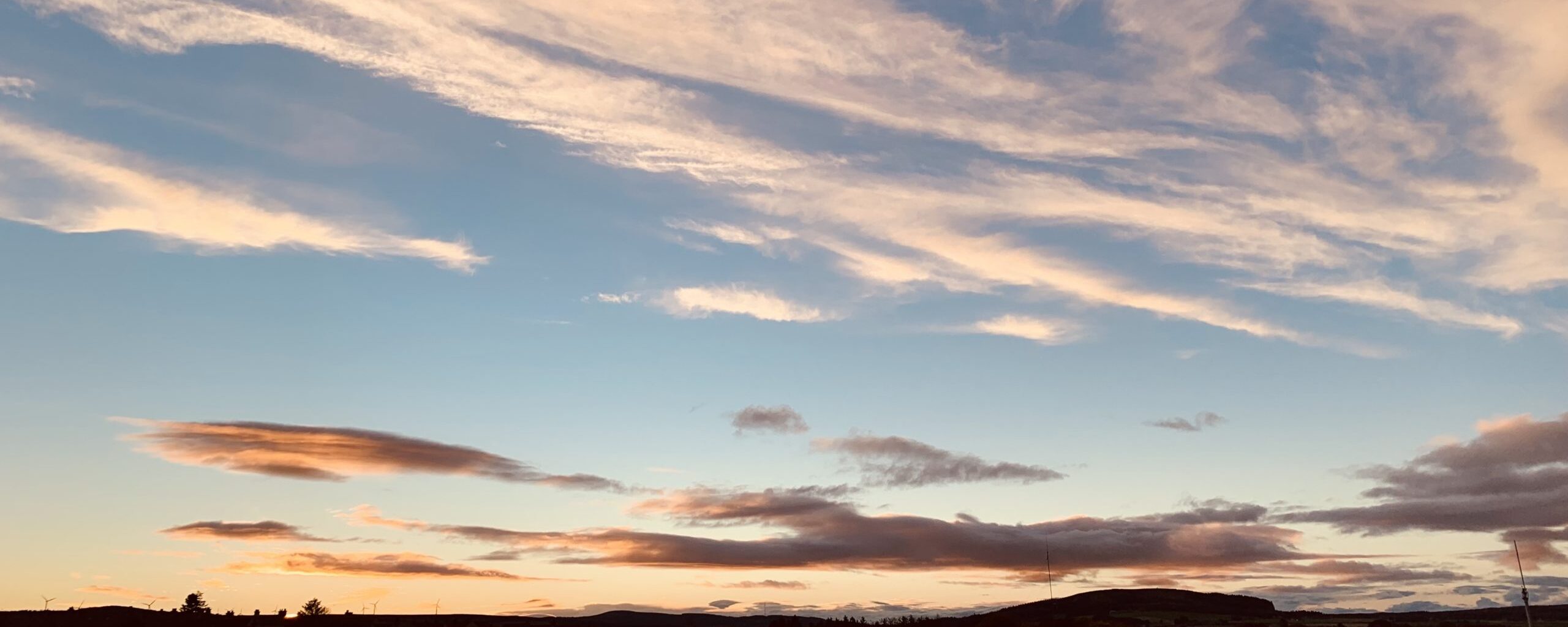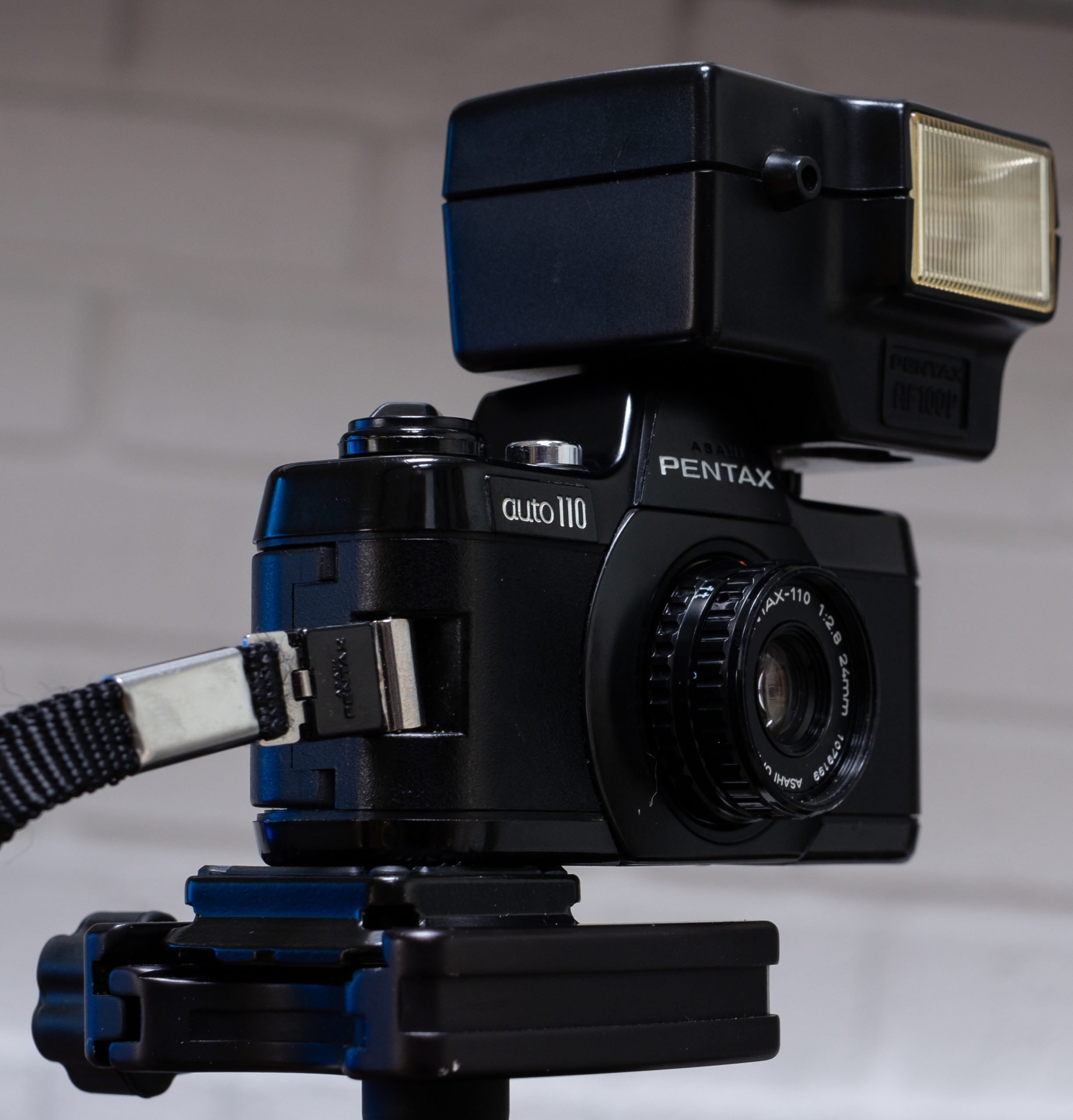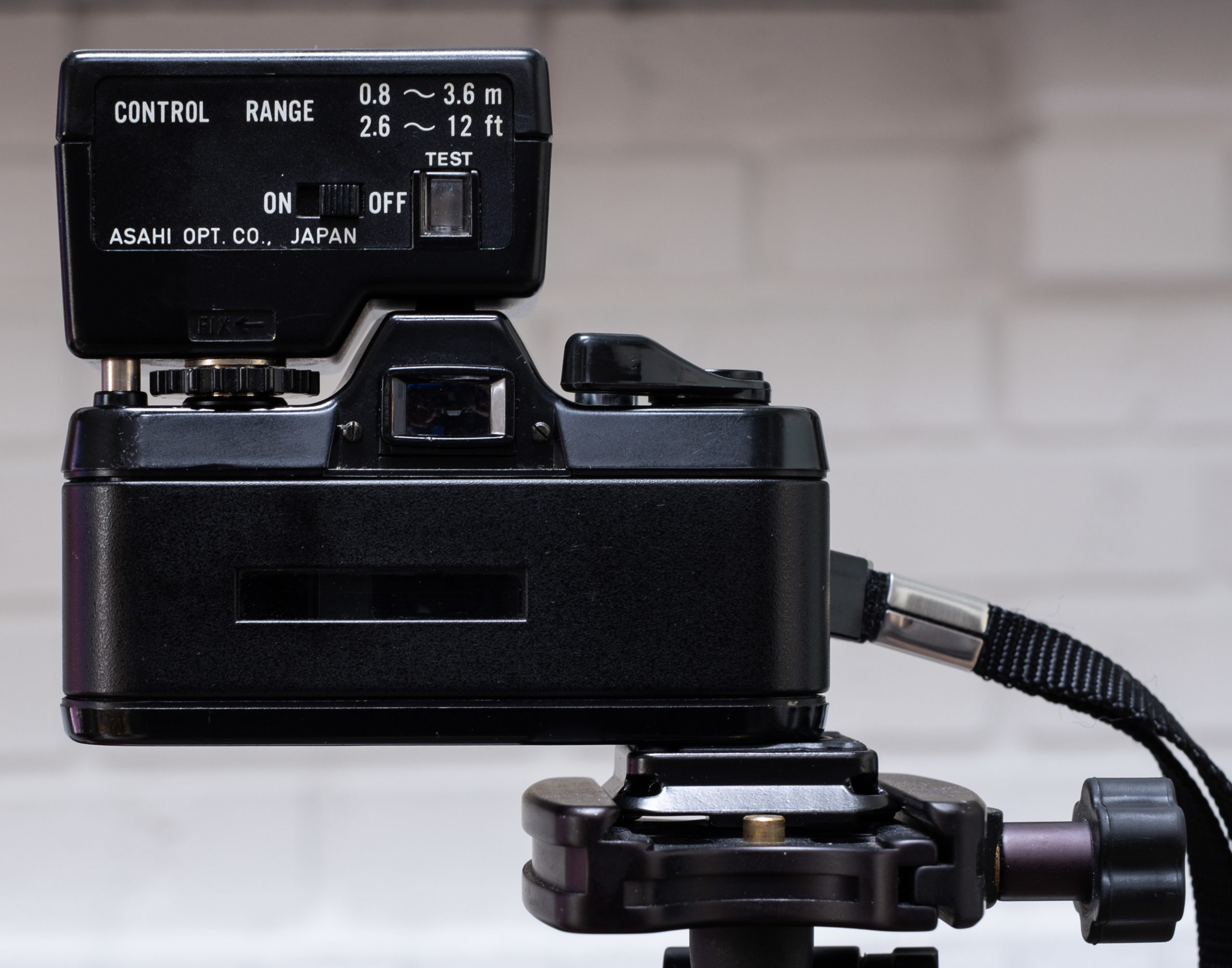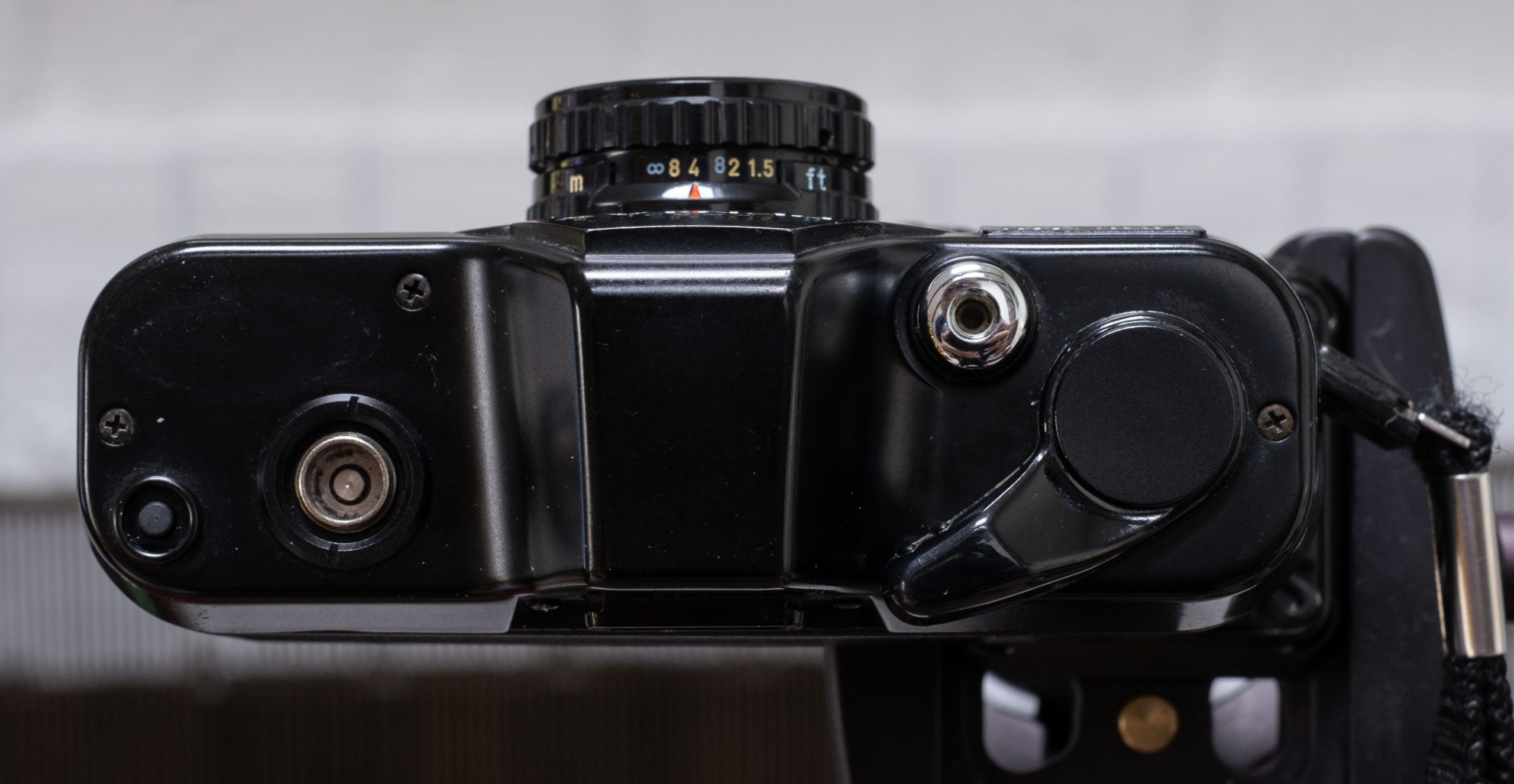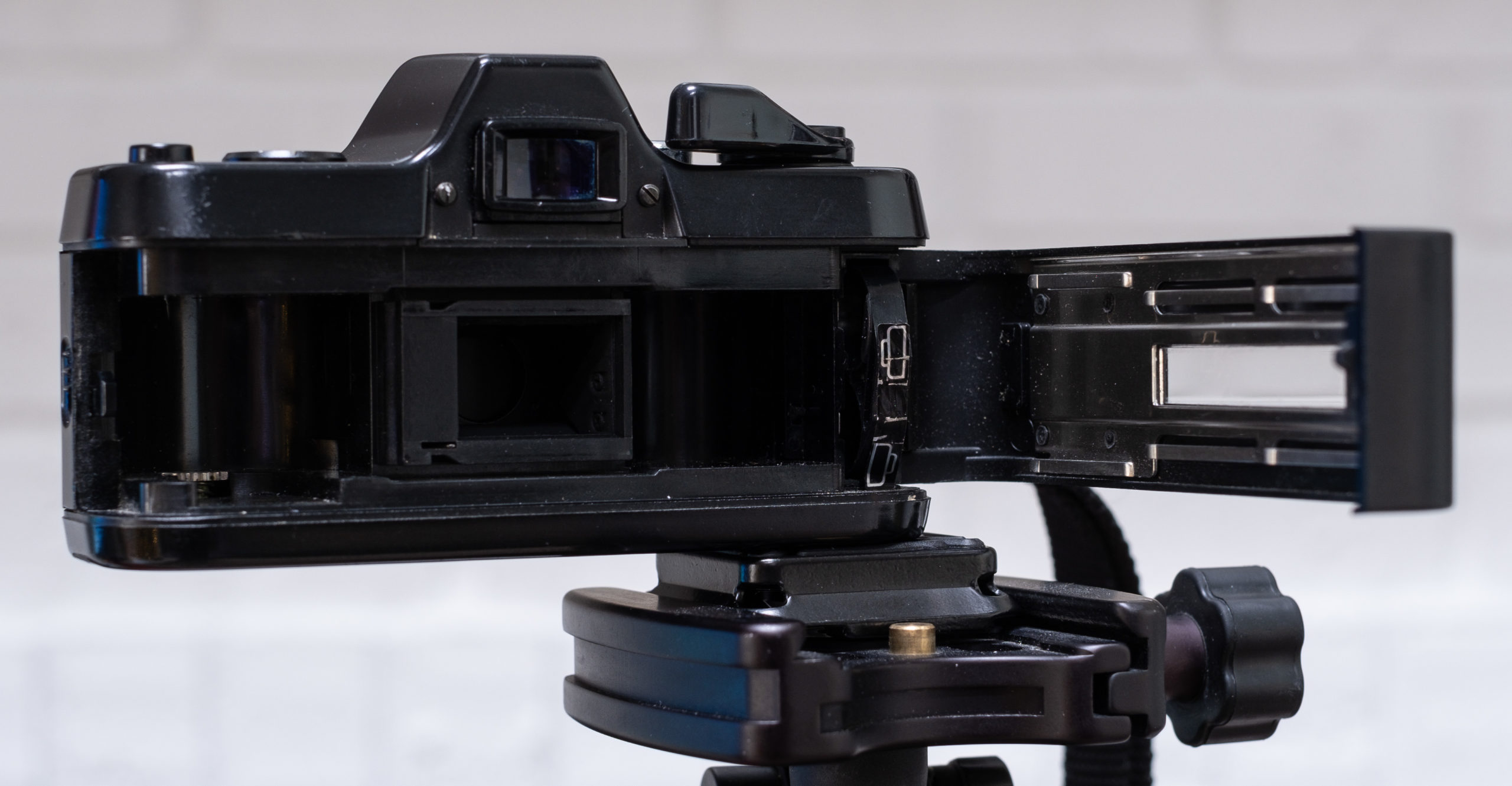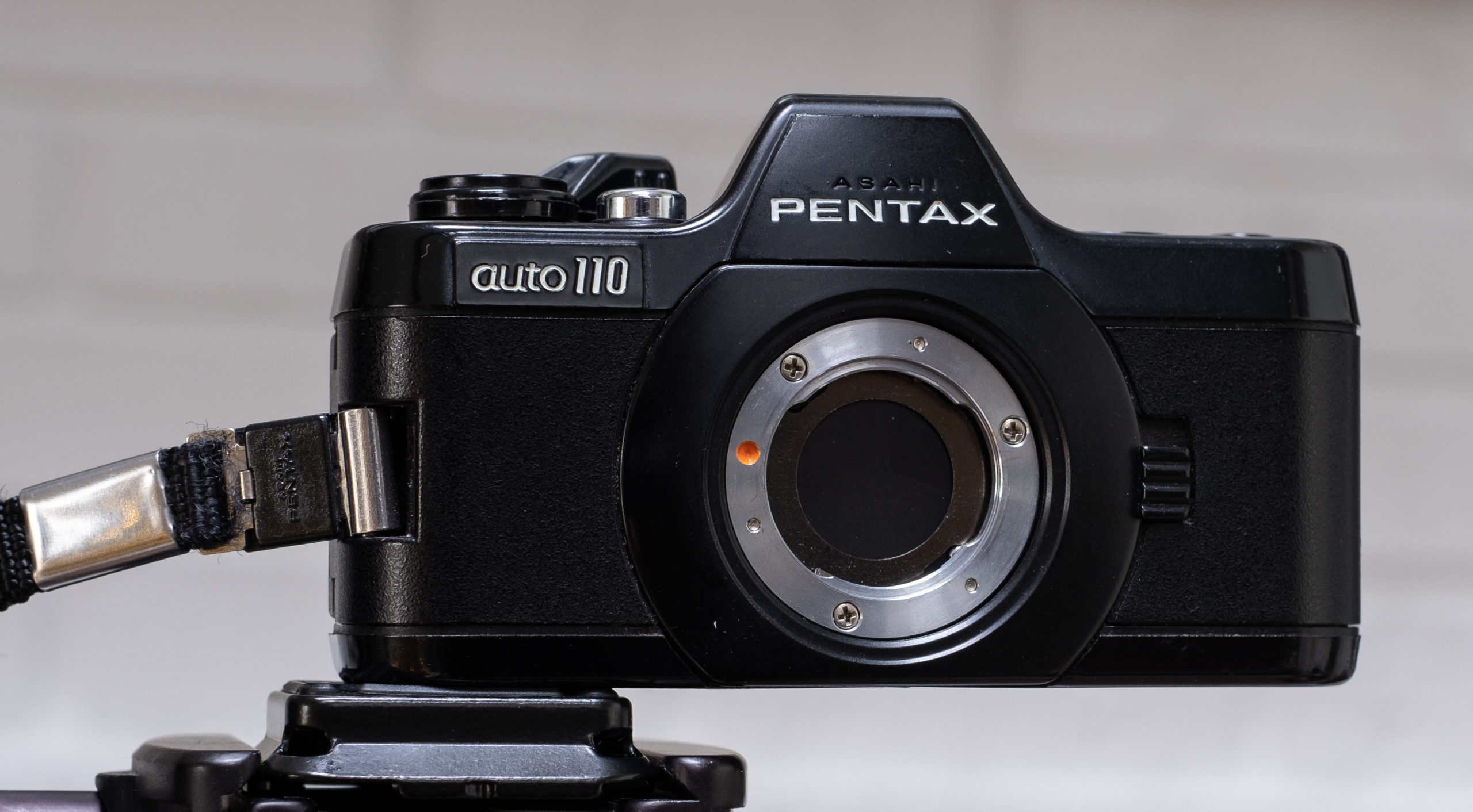Pentax auto 110

Background
This is a real oddity, a precision SLR designed around the tiny 110 film format. Pentax introduced this in 1979, at a time when electronic exposure controls could be miniaturised to the point where they could be used in a device this small. And it’s really, really, small!
Technical Details
This is the only interchangeable lens SLR ever produced for the 110 film cartridge – there were fixed lens 110 cameras from other manufacturers. It offers program only TTL auto exposure, and a range of 6 lenses in the Pentax 110 Bayonet format:
- 18 mm f/2.8 wide-angle lens (equivalent angle of view to a 35 mm lens on a 135 format camera).
- 24 mm f/2.8 normal lens (equiv. 50 mm). The optical design meant that this was the smallest lens on the system.
- 50 mm f/2.8 telephoto lens (equiv. 100 mm)
In 1981, three more lenses were included:
- 18 mm “Pan Focus” lens was a compact lens of fixed focus set to the hyperfocal distance; the short focal length and wide aperture meant that its depth of field stretched from 1.75 m (5.7 ft) to infinity. The camera aperture needed to be set at f/6.3 for this lens to work as intended.
- 70 mm f/2.8 telephoto lens (equiv. 140 mm)
- 20–40 mm f/2.8 zoom lens (equiv. 40–80 mm). This lens extended for wider focal lengths and shortened towards the telephoto end.
The Museum Sample
Found, as usual, on eBay complete with flash, filters, case, and all the original manuals for $90. It’s generally quite clean, but the 110 film is tough to find and so difficult to tell if it still works.
The flashgun, tiny as it is, still dwarfs the camera itself.
